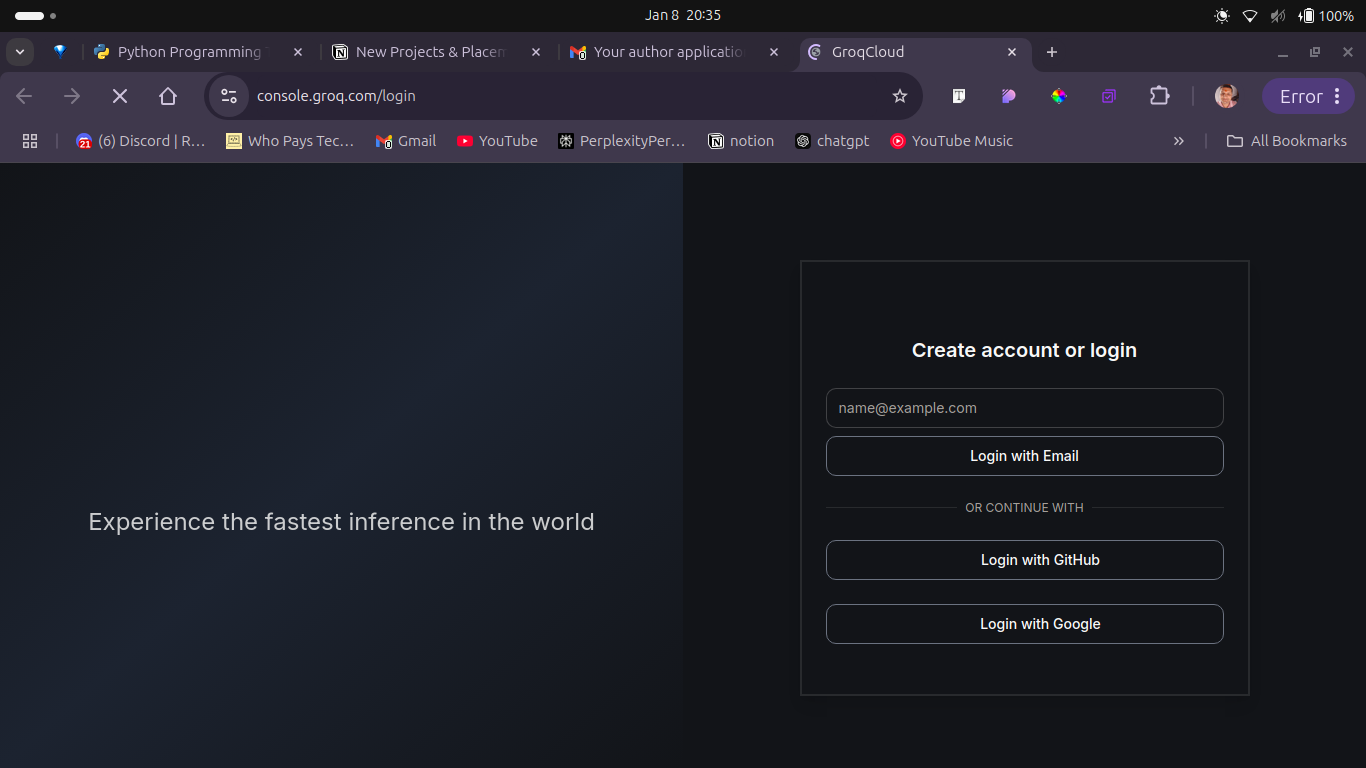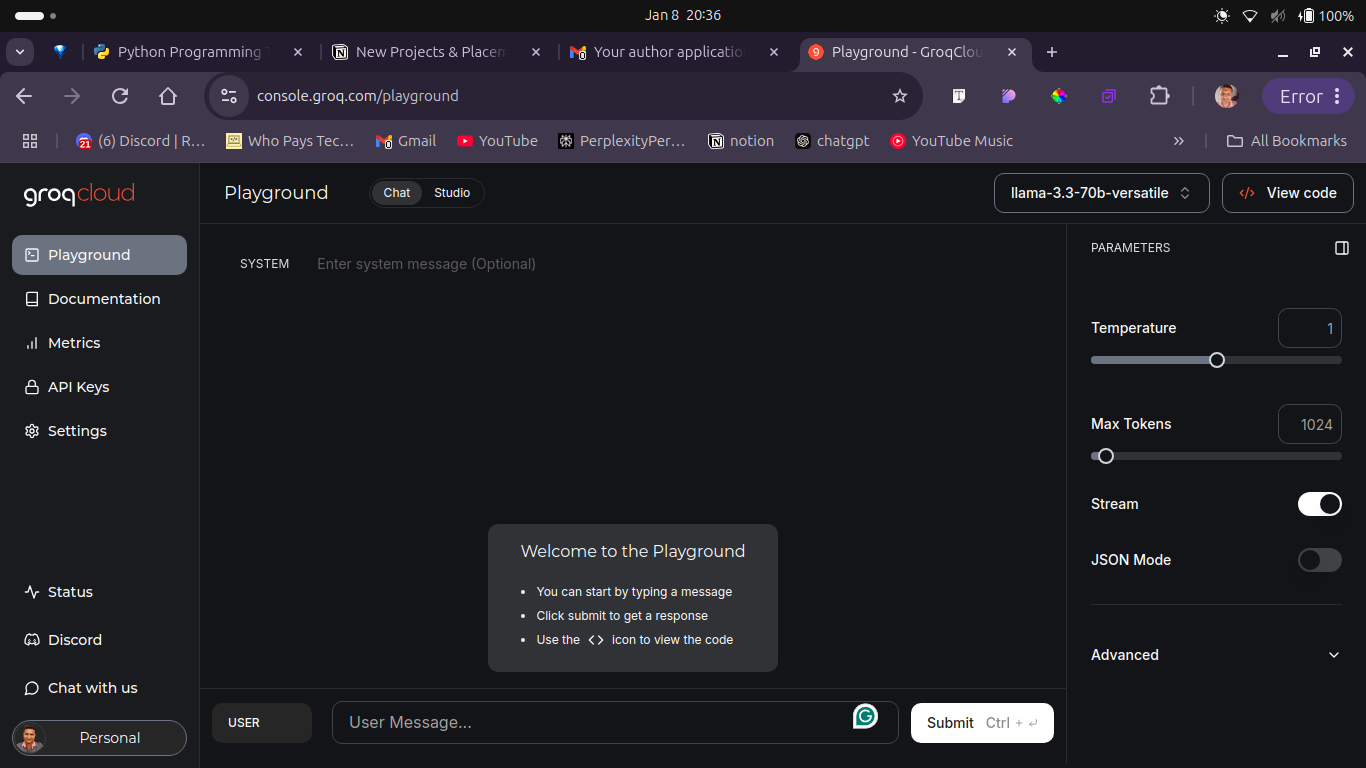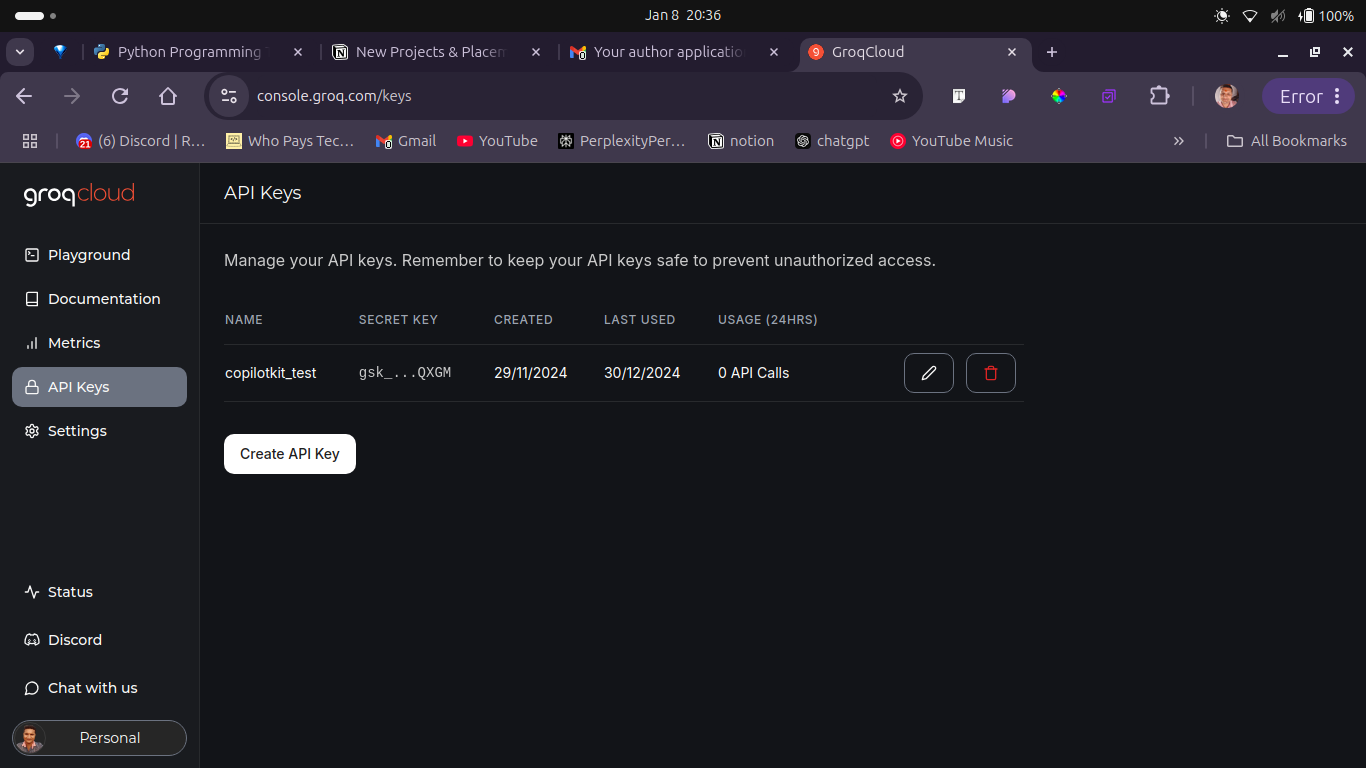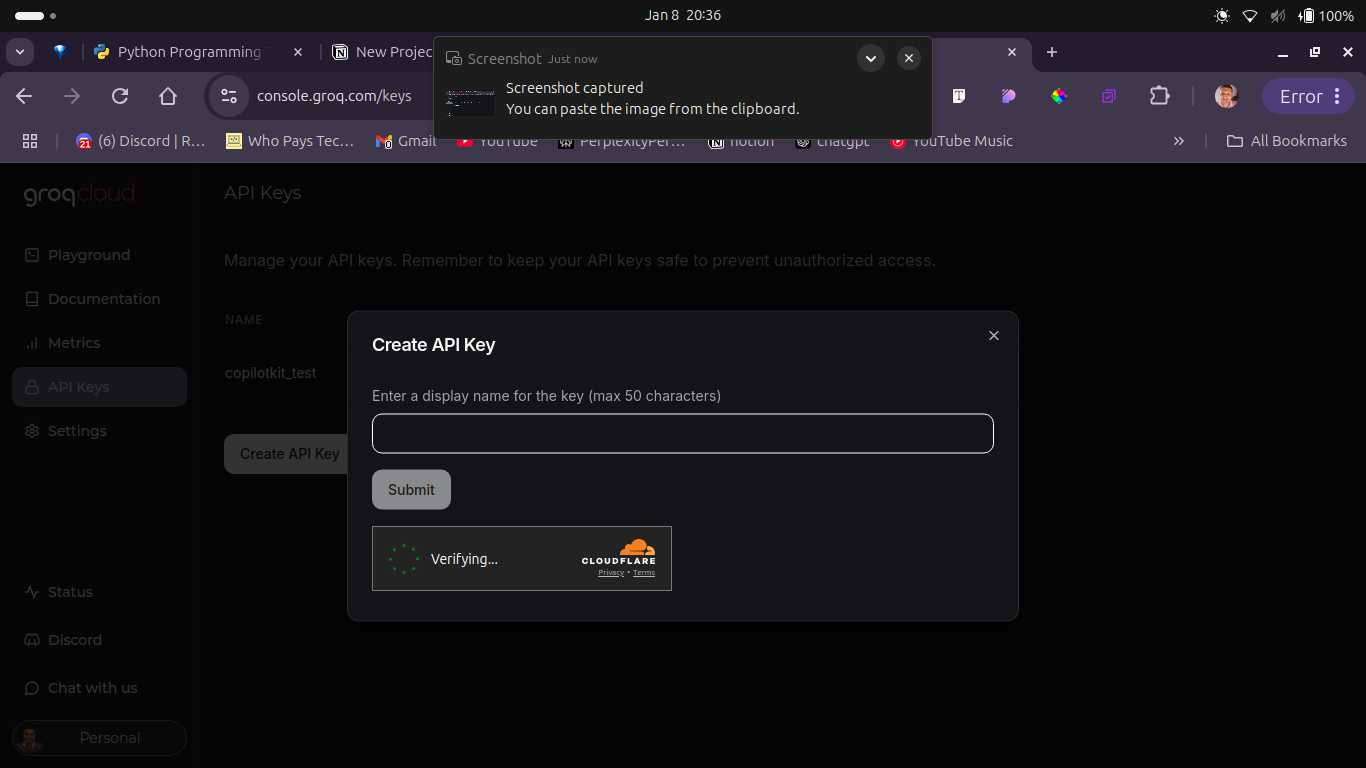How to Build a Replit Clone with Socket.io, Monaco Editor, and Copilotkit
I’ve been coding for about a decade now. And over the years, I’ve tried my fair share of development tools—especially IDEs like Sublime Text, Atom, and even NetBeans back in my college days. But when VS Code came along, it completely changed the game...

I’ve been coding for about a decade now. And over the years, I’ve tried my fair share of development tools—especially IDEs like Sublime Text, Atom, and even NetBeans back in my college days. But when VS Code came along, it completely changed the game for me. It’s lightweight, fast, and packed with features that just make life easier as a developer. It quickly became my favourite tool.
With all the recent advancements in AI, I wanted to build something that’s not just fun but also a meaningful learning experience. That’s how this project was born—a simple Replit-inspired clone for the web. It combines AI to generate code, lets you run React files, and displays the output seamlessly, just like Replit. On top of that, you can edit files and save your work in real-time, so nothing ever gets lost.
What we’ll cover:
Prerequisites & Tools
In this tutorial, we’ll build an AI-powered Replit clone—a web-based IDE. This IDE will enable you to generate React code files, edit them in a VSCode-like environment, preview the final output, and save the code in real time. It will also support CRUD operations on the generated files.
For this project, I’ll leverage some tools I’ve used in the past, including those from my SQL Query Data Extractor project. Below are the tools and technologies we’ll use:
Database
The database is the backbone of any application—it stores data and serves it as needed. For this project, I’ll use my all-time favourite, MongoDB Atlas.
I chose MongoDB Atlas because it integrates seamlessly with Next.js, and since it’s a cloud-based database, I don’t need to host it manually—making it a plug-and-play solution. Performing CRUD operations with MongoDB Atlas is straightforward and efficient.
Code Editor
The code editor is the core of this project, as it powers the IDE experience. For this, I’ll use the legendary Monaco Editor, the same editor that drives VSCode. Monaco Editor handles files effortlessly and supports a wide range of file types. In this project, it will allow users to view and edit code files.
Code Preview
Once we generate and edit code in the Monaco Editor, we’ll need a way to preview its output. For this, I’ll use CodeSandbox’s Sandpack, a free and powerful tool for live code previews.
Sandpack supports various frameworks and file types, whether you’re working with static HTML/CSS files or frameworks like React. It displays files and their real-time output seamlessly.
AI Agent
The AI Agent will be responsible for generating code using Natural Language Processing (NLP). Acting as a bridge between your ideas and the code, it will take user prompts and translate them into functional code files.
For this, I’ll use CopilotKit, my favourite free and open-source tool for AI-powered code generation. CopilotKit will take your ideas and create the corresponding code files based on your input.
AI Model
The AI Agent relies on an underlying AI model to process user inputs and generate code. For this project, I’ll use GroqAI, a flexible and reliable platform that supports various popular AI models. GroqAI’s versatility makes it perfect for this project’s requirements.
Next.js
To build a robust web application that combines both frontend and backend functionalities, I’ll use Next.js. It’s an excellent framework for creating scalable applications, offering server-side rendering and other powerful features that are ideal for this project.
Deployment
For deployment, you can choose any service. I prefer Vercel, as it integrates seamlessly with Next.js and is free for hobby projects.
By combining these tools, you’ll build a powerful, user-friendly application that effortlessly produces the code and provides a live preview like Replit does.
What We’ll Do Here
In this tutorial, you’ll follow these steps to build our app:
Step 1 – Set Up the Database:
Set up a database either locally or on the cloud. For seamless integration, use an online database tool that supports data access and extraction via REST APIs.
Step 2 – Obtain Cloud API Keys:
Retrieve the necessary API keys for your AI model to enable smooth and secure integration.
Step 3 – Build the Web Application:
Develop a web application and configure the backend to integrate CopilotKit. Ensure it’s properly set up for efficient functionality.
Step 4 – Train CopilotKit with Your Database:
Provide your database data to CopilotKit so it can understand and utilize the information for natural language processing.
Step 5 – Integrate the CopilotKit Chat Interface:
Embed the CopilotKit chat interface into your application and configure it to work seamlessly with your app’s workflow.
Step 6 – Test Locally:
Run the application on your local machine, thoroughly testing each feature to identify and resolve any issues.
Step 7 – Deploy the Application:
Once testing is complete and the app is working as expected, deploy it to a hosting platform for public use.
How Does the App Work?

This project is a fun experiment and a step toward my long-term goal of building something around code editors, particularly inspired by VSCode.
The real magic happens with CopilotKit. As soon as you input an idea into CopilotKit, it uses predefined system prompts that adapt to your project requirements. These prompts allow CopilotKit to interpret plain English instructions and transform them into meaningful outputs. In this tutorial, I’ll show you how to configure these system prompts effectively to maximize results.
For example, if you enter the idea “build a simple React app”, CopilotKit passes that idea to the integrated AI model. The AI model, working in coordination with CopilotKit’s system prompts, generates the necessary code files based on your input.
The generated files are then displayed in the File Explorer on the left side of the screen. You can easily browse through the files created by CopilotKit.
To preview the code, simply click on a file like App.js. The file’s code will load into the Monaco Editor on the left, while the Sandpack preview on the right will render a real-time output of the file.
You can now experiment with the files—tweak the code, change colours, fonts, or text, and even write your own logic, just like working with regular HTML, CSS, or React files. Any changes you make will be saved in real time to the database. So even if you accidentally close the project, your progress will be intact. Simply refresh the page, and your code will be right where you left it.
How to Set Up Your Tools
Now we’ll go through everything you need to set up the project.
Install Next.js and dependencies:
First, you’ll need to create a Next.js app. Go to the terminal and run the following command:
npx create-next-app@latest my-next-app
Replace my-next-app with your desired project name and use TypeScript.
Navigate to the project folder:
cd my-next-app
Start the development server:
npm run dev
Open your browser and navigate to http://localhost:3000 to see your Next.js app in action.
Install CopilotKit and dependencies
Navigate to the project’s root folder in the terminal and run the following command. This will install all the necessary dependencies for CopilotKit along with other essential packages, such as dotenv, groq-sdk, sandpack, Monaco Editor, Lucide React, Socket and Mongoose.
npm install @copilotkit/react-ui @copilotkit/react-core
npm install dotenv
npm install groq-sdk
npm install @codesandbox/sandpack-react
npm install @monaco-editor/react
npm install lucide-react
npm install mongoose
npm install socket.io
npm install socket.io-client
CopilotKit: This dependency handles all operations and configurations related to CopilotKit.
Dotenv: Used for managing environment variables, and keeping sensitive keys secure within the project.
GroqSDK: Facilitates access to various LLM models through a single API key.
CodeSandbox Sandpack (React): Provides the ability to display real-time previews of the code.
Monaco Editor: Powers the VSCode-like environment, enabling real-time code editing.
Lucide React: An icon library used to display icons for files and folders.
Mongoose: Manages MongoDB schemas for storing and retrieving data from the database.
socket.io: A very powerful tool for real-time data syncing between client and server.
socket.io client: Extra socket.io client package for data communication.
Set Up the LLM for Action:
This step is crucial for the project, as it involves setting up the LLM (Large Language Model) to convert natural language (plain English) queries into a React framework working code.
There are many LLMs available, each with its unique strengths. Some are free, while others are paid, making the selection process for this project a bit challenging.
After thorough experimentation, I chose the Groq Adapter because:
It integrates multiple LLMs into a single platform.
It offers access via a unified API key.
It’s fully compatible with CopilotKit.
How to Set Up Groq Cloud
To get started with Groq Cloud, visit its website and either log in if you already have an account or create a new account if you’re new. Once logged in, navigate to the Groq Dashboard.
This is the homepage of Groq cloud:

Once logged in, a new page will open that’ll look like this:

As you can see, the sidebar has an API Keys link. Click on it, and it will open a new page as shown in the image below. You can also select any LLM of your choice which is given at the top right before the view code option.

Here, click on the Create API Key button it will open a pop up like you see below. Just enter the name of your API key and click on Submit to create a new API key for you. Then copy this API key and paste it inside your .env file.

To enable seamless access to various LLMs on Groq Cloud, generate an API key by going to the Groq API Keys section. Create a new API key specifically for the LLM, ensuring that it is properly configured.
With the LLM set-up and all components ready, you are now prepared to build the project.
How to setup the database
Step 1: Create a MongoDB Atlas Account
Go to the MongoDB Atlas website.
Click on "Try Free" or "Sign Up".
Fill in your details (name, email, password) to create an account.
Verify your email address by clicking the link sent to your inbox.

Step 2: Create a New Project
After logging in, you will be directed to the MongoDB Atlas dashboard.
Click on the "New Project" button. This will take you to the Create a Project page.

Fill in the Project name and click on the next button, and it will open a new page to show the project owner's information.

Now click on the Create Project Button. This will take you to the main dashboard of the project where you will get the option to create the database.

Now Click on the Create Button to open a new page with details of deploying your cluster.
Choose a cloud provider (AWS, Google Cloud, or Azure) and a region closest to your location.
Select the "Free Tier" (free forever, but with limited resources) or a paid tier for larger projects.

Give your cluster a name (for example,
MyCluster).Click "Create Deployment". It will take a few minutes for the cluster to be provisioned.
Then It will ask you to connect your cluster to the database through a service. You should see your username and password – keep this somewhere.

Here, you will have to make yourself a database user, so click on the Create Database user button.
It will take a few seconds to complete this process. Once it’s done, close the pop-up and return back to the dashboard.
On the dashboard page you can see Get Connection String button. Go on and click on it.

It will open a new popup containing your MongoDB atlas URI. Simply copy the string, put it into your
.envfile and use the password you created in step 14.
Example use case :
//.env file
MONGODB_URI='YOUR MONGODB URL'
Structure and Features of the App
The focus of this project is on simplicity and functionality, to replicate Replit's core features like code editing and real-time previews. The idea is to create a straightforward web application that lets you:
Host three essential components: a File Explorer, the Monaco Editor, and a Sandbox.
Open files generated by CopilotKit in the Monaco Editor and perform CRUD operations on them.
See the real-time output of your code as you work.
Chat with the CopilotKit chatbot, which will be fully integrated into the front end.
The plan is to keep the implementation clean and practical while delivering a smooth coding experience.
Webpage Structure
Since we’ve already set up the Next.js app, the next step is to create a minimalistic webpage with the following components:
File Explorer: Displays the files generated by CopilotKit.
Monaco Editor: A versatile code editor that handles various file types and displays the content.
Sandbox: Shows the real-time output of the code.
CopilotKit Chatbot: Generates code files based on natural language prompts.
Key Features
Error Handling: Any failures, such as API or database issues, will be highlighted with red text for immediate visibility.
Data Presentation: Data is presented in two parts: first in the File Explorer for code files, and second in the Monaco Editor for viewing the content of those files.
CopilotKit Chatbot Integration: The chatbot will allow natural language interactions with the database. The blue-coloured ball on the page represents the CopilotKit chatbot, which serves as the key interface for interacting with the database.
Users can ask questions about the database using natural language.
The chatbot processes these queries, converts them into SQL, and fetches the results seamlessly.
The front end will look something like this: https://replit-mongodb.vercel.app/
How to Build the Back End
Before we start building the back end, you’ll need to put all important credentials into your .env file, which should look like this:
NEXT_PUBLIC_GROQ_CLOUD_API_KEY=<your-key-here>
MONGODB_URI=<your-mongodb-url>
These are environment variables used to configure sensitive or environment-specific settings in an application:
NEXT_PUBLIC_GROQ_CLOUD_API_KEY:This is a public API key for accessing the Groq Cloud API.
It is prefixed with
NEXT_PUBLIC_, which means it is exposed to the client-side code in a Next.js application.Replace
MONGODB_URI:This is the connection string for a MongoDB database.
It includes the database URL, credentials, and other connection details.
Replace
How to Configure the CopilotKit Back End
Open your Next.js app in any code editor—I prefer VSCode—and go to the root folder, which looks like this:

Inside the app folder, make a new folder called api. Inside the API folder, make another folder called copilotkit. Then in there, make a new file called route.js and paste this code inside the file:
import {
CopilotRuntime,
GroqAdapter,
copilotRuntimeNextJSAppRouterEndpoint,
} from "@copilotkit/runtime";
import Groq from "groq-sdk";
const groq = new Groq({ apiKey: process.env.NEXT_PUBLIC_GROQ_CLOUD_API_KEY });
const copilotKit = new CopilotRuntime({
async onResponse({ message, context }) {
try {
// Extract any file operations from the message and process them
const fileBlocks = message.content.split("---");
if (fileBlocks.length > 0) {
// Format the response to use processFiles action
return {
content: `@processFiles(response: \\`${message.content}\\`)`,
};
}
return message;
} catch (error) {
console.error("Error in onResponse:", error);
return message;
}
},
});
const serviceAdapter = new GroqAdapter({
groq,
model: "llama-3.3-70b-versatile",
systemPrompt: `You are an AI-powered code generator integrated into a web-based IDE. Your task is to generate project files and code based on user commands.
When generating files, use this exact format:
FILE: filename.ext
CODE:
[code content here]
For multiple files, separate them with "---".
Example response:
I'll create a React component:
FILE: Button.jsx
CODE:
import React from 'react';
const Button = () => {
return (
);
};
export default Button;
Important rules:
- Always include both FILE: and CODE: markers
- Use appropriate file extensions
- Generate complete, working code
- Maintain proper indentation
- Explain what you're creating before showing the files
- Make sure code is syntactically correct`,
});
export const POST = async (req) => {
const { handleRequest } = copilotRuntimeNextJSAppRouterEndpoint({
runtime: copilotKit,
serviceAdapter,
endpoint: "/api/copilotkit",
});
return handleRequest(req);
};
Here’s a detailed explanation of each part:
This code defines a CopilotKit Runtime integration with Next.js, designed to process requests for generating and managing code files in a web-based IDE environment. It connects to the Groq cloud service for additional functionalities and processes file-based outputs from AI-generated responses.
This code sets up a CopilotRuntime integration with Groq's AI model to generate and process code files in response to user requests. Here's a breakdown:
Key Components:
Groq Initialization:
The
GroqSDK is initialized using theNEXT_PUBLIC_GROQ_CLOUD_API_KEYenvironment variable.The model used is
llama-3.3-70b-versatile.
CopilotRuntime:
A
CopilotRuntimeinstance is created with a customonResponsehandler.The
onResponsefunction processes the AI's response:Extracts file blocks (separated by
---) from the message.Formats the response to trigger a
processFilesaction if file blocks are detected.
GroqAdapter:
A
GroqAdapteris configured to interact with the Groq API.It includes a system prompt that instructs the AI to generate code files in a specific format:
Files are marked with
FILE:andCODE:.Multiple files are separated by
---.The AI is instructed to generate complete, syntactically correct code with proper explanations.
API Endpoint:
A
POSTthe endpoint is exposed using Next.js App Router.It uses
copilotRuntimeNextJSAppRouterEndpointto handle incoming requests, passing them to theCopilotRuntimeandGroqAdapter.
Example Usage
Request
A POST request to
/api/copilotkitmight look like this:curl -X POST http://localhost:3000/api/copilotkit \ -H "Content-Type: application/json" \ -d '{"command": "Create a React component for a button"}'
AI Response (Processed by
onResponse)AI might return this response:
FILE: Button.jsx CODE: import React from 'react'; const Button = () => { return ; }; export default Button;
Response to Client
The API wraps the response into the formatted structure:
{ "content": "@processFiles(response: `FILE: Button.jsx\nCODE:\nimport React from 'react';\n\nconst Button = () => {\n return ;\n};\n\nexport default Button;`)" }
Key Features
AI-Powered Code Generation with copilotkit popup:
The system generates complete project files based on user instructions.
Ensures proper formatting (for example,
FILE:andCODE:markers).
File Handling:
Splits multi-file responses into manageable blocks using
---.Supports actions like
@processFilesfor integration with the IDE.
Scalable API:
- Modular design with
CopilotRuntimeandGroqAdapterallows easy extension and customization.
- Modular design with
Error Handling:
Logs errors without interrupting the workflow.
Defaults to returning the unprocessed message on failure.
Making Routes for CRUD Operation
So far, we've covered how to integrate CopilotKit into the backend. Now, we need to handle file operations, so we'll create another route to manage files with the database.
To develop the backend for file handling, I'll create a new folder inside the API folder and name it files. Inside the files folder, I’ll create a simple route.js file. Here’s the code I’ll be using inside the file:
app/api/files/route.tsximport { NextResponse } from "next/server"; import mongoose from "mongoose"; import { connectDB, File } from "@/app/lib/mongodb"; // Type for the request body interface FileRequestBody { id?: string; name?: string; content?: string; }interface FileCreateRequest { name: string; content: string; } interface FileUpdateRequest { id: string; name?: string; content?: string; } // Fetch all files (GET /api/files) export async function GET(): Promise<Response> { try { await connectDB(); // Ensure DB connection const files = await File.find({}); return NextResponse.json(files, { status: 200 }); } catch (error) { return NextResponse.json( { error: "Failed to fetch files" }, { status: 500 } ); } } // Create a new file (POST /api/files) export async function POST(req: Request): Promise<Response> { try { await connectDB(); // Ensure DB connection is successful // Parse the request body const { name, content }: FileRequestBody = await req.json(); if (!name || !content) { throw new Error("Missing required fields: name or content"); } // Log the incoming data for debugging console.log("Creating file with data:", { name, content }); // Create a new file in the database const newFile = new File({ name, content }); await newFile.save(); // Return the newly created file return NextResponse.json(newFile, { status: 201 }); } catch (error: any) { // Log the error for debugging console.error("Error creating file:", error); return NextResponse.json( { error: "Failed to create file", message: error.message }, { status: 400 } ); } } // Update file content (PUT /api/files) export async function PUT(req: Request): Promise<Response> { try { await connectDB(); // Ensure DB connection const { id, name, content }: FileRequestBody = await req.json(); // Validate ID format if (!id || !mongoose.Types.ObjectId.isValid(id)) { return NextResponse.json({ error: "Invalid file ID" }, { status: 400 }); } // Update file name or content if provided const updatedFile = await File.findByIdAndUpdate( id, { ...(name && { name }), ...(content && { content }) }, { new: true } ); if (!updatedFile) { return NextResponse.json({ error: "File not found" }, { status: 404 }); } return NextResponse.json(updatedFile, { status: 200 }); } catch (error: any) { return NextResponse.json( { error: "Failed to update file" }, { status: 400 } ); } } // Delete a file (DELETE /api/files) export async function DELETE(req: Request): Promise<Response> { try { await connectDB(); // Ensure DB connection const { id }: FileRequestBody = await req.json(); // Validate ID format if (!id || !mongoose.Types.ObjectId.isValid(id)) { return NextResponse.json({ error: "Invalid file ID" }, { status: 400 }); } await File.findByIdAndDelete(id); return NextResponse.json( { message: "File deleted successfully" }, { status: 200 } ); } catch (error: any) { return NextResponse.json( { error: "Failed to delete file" }, { status: 400 } ); } }
Code explanation :
This code defines API routes for handling CRUD operations (Create, Read, Update, Delete) on a MongoDB collection called File in a Next.js application. Each route is connected to MongoDB using Mongoose and we used NextResponse to format the responses.
Code Breakdown
1. Imports
import { NextResponse } from "next/server";
import mongoose from "mongoose";
import connectDB from "@/app/lib/mongodb"; //we made this file
import File from "@/app/lib/models/File"; //we made this file
NextResponse: Used for creating HTTP responses in Next.js API routes.connectDB: Connects to the MongoDB database.File: A Mongoose model representing theFilecollection.
2. Fetch All Files (GET)
export async function GET() {
await connectDB(); // Ensure DB connection
try {
const files = await File.find({}); // Fetch all files
return NextResponse.json(files, { status: 200 }); // Return files in JSON format
} catch (error) {
return NextResponse.json(
{ error: "Failed to fetch files" },
{ status: 500 }
);
}
}
Purpose: Retrieves all documents in the
Filecollection.Flow:
Connects to MongoDB.
Uses
File.find({})to fetch all files.Returns the files with a
200status or an error with a500status.
3. Create a New File (POST)
export async function POST(req) {
await connectDB(); // Ensure DB connection
try {
const { name, content } = await req.json(); // Parse the request body
if (!name || !content) {
throw new Error("Missing required fields: name or content");
}
const newFile = new File({ name, content }); // Create new file
await newFile.save(); // Save to MongoDB
return NextResponse.json(newFile, { status: 201 }); // Return the new file
} catch (error) {
return NextResponse.json(
{ error: "Failed to create file", message: error.message },
{ status: 400 }
);
}
}
Purpose: Creates a new document in the
Filecollection.Flow:
Parses the
nameandcontentfields from the request body.Validates the required fields.
Creates and save the file in MongoDB.
Returns the new file with a
201status or an error with a400status.
4. Update a File (PUT)
export async function PUT(req) {
await connectDB(); // Ensure DB connection
try {
const { id, name, content } = await req.json();
if (!mongoose.Types.ObjectId.isValid(id)) {
return NextResponse.json({ error: "Invalid file ID" }, { status: 400 });
}
const updatedFile = await File.findByIdAndUpdate(
id,
{ ...(name && { name }), ...(content && { content }) },
{ new: true }
);
if (!updatedFile) {
return NextResponse.json({ error: "File not found" }, { status: 404 });
}
return NextResponse.json(updatedFile, { status: 200 });
} catch (error) {
return NextResponse.json(
{ error: "Failed to update file" },
{ status: 400 }
);
}
}
Purpose: Updates an existing document in the
Filecollection.Flow:
Parses the
id,name, andcontentfrom the request body.Validates the
idusing Mongoose'sObjectId.Updates the document using
File.findByIdAndUpdate()(updates only provided fields).Returns the updated document with a
200status, or an error with400or404.
5. Delete a File (DELETE)
export async function DELETE(req) {
await connectDB(); // Ensure DB connection
try {
const { id } = await req.json();
if (!mongoose.Types.ObjectId.isValid(id)) {
return NextResponse.json({ error: "Invalid file ID" }, { status: 400 });
}
await File.findByIdAndDelete(id); // Delete the document
return NextResponse.json(
{ message: "File deleted successfully" },
{ status: 200 }
);
} catch (error) {
return NextResponse.json(
{ error: "Failed to delete file" },
{ status: 400 }
);
}
}
Purpose: Deletes a document from the
Filecollection.Flow:
Parses the
idfrom the request body.Validates the
idformat.Uses
File.findByIdAndDelete()to remove the document.Returns a success message with a
200status or an error with400.
Example API Requests: How to test API in local
GET All Files
curl -X GET http://localhost:3000/api/filesCreate a File (POST)
curl -X POST http://localhost:3000/api/files \ -H "Content-Type: application/json" \ -d '{"name": "example.txt", "content": "This is a test file"}'Update a File (PUT)
curl -X PUT http://localhost:3000/api/files \ -H "Content-Type: application/json" \ -d '{"id": "64ffab67c728f51234567890", "name": "updated.txt", "content": "Updated content"}'Delete a File (DELETE)
curl -X DELETE http://localhost:3000/api/files \ -H "Content-Type: application/json" \ -d '{"id": "64ffab67c728f51234567890"}'
Creating MongoDB Schemas
Now, create a lib folder inside the app folder. This lib folder will handle essential database tasks, such as database schema and connectivity. Inside the lib folder, create another folder named models. Within this models folder, create a new file called File.js and paste the following code into it.
This version simplifies the instructions and improves clarity while maintaining the original meaning.
import mongoose, { Schema, Document, Model } from "mongoose";
// Define an interface for the file document
interface IFile extends Document {
name: string;
content: string;
createdAt: Date;
updatedAt: Date;
}
// Define the schema for the file model
const fileSchema = new Schema(
{
_id: { type: Schema.Types.ObjectId, auto: true }, // MongoDB default _id
name: { type: String, required: true }, // Removed unique constraint
content: { type: String, required: true },
},
{ timestamps: true } // Automatically adds createdAt & updatedAt
);
// Export the File model with type safety
const File: Model =
mongoose.models.File || mongoose.model("File", fileSchema);
export default File;
Code Explanation
This code defines a Mongoose schema and model for a File collection in a MongoDB database. It specifies the structure and rules for documents in the collection.
This code defines a Mongoose schema and model for a File document in MongoDB. Here's a brief explanation:
Key Components:
Interface (
IFile):Defines the structure of a
Filedocument with:name(string, required).content(string, required).createdAtandupdatedAt(automatically managed by Mongoose).
Schema (
fileSchema):Maps the
IFileinterface to a MongoDB schema.Includes:
_id: Auto-generated MongoDB ObjectId.nameandcontent: Required fields.timestamps: true: Automatically addscreatedAtandupdatedAtfields.
Model (
File):Creates or retrieves the Mongoose model for the
Filecollection.Ensures type safety using the
IFileinterface.
Connecting to database
Half of the work is done! Now, it’s time to connect our app to the database. To do this, I’ll create a new file inside the lib folder, where we previously created the database schema. I’ll name the file mongodb.tsx and paste the following code inside it:
import mongoose, { Schema, Model, Connection } from "mongoose";
import { IFile } from "../types";
// Define mongoose connection URI
const MONGODB_URI = process.env.MONGODB_URI;
if (!MONGODB_URI) {
throw new Error(
"Please define the MONGODB_URI environment variable inside .env.local"
);
}
let cached: {
conn: Connection | null;
promise: Promise | null;
} = { conn: null, promise: null };
export async function connectDB(): Promise<Connection> {
if (cached.conn) {
return cached.conn;
}
if (!cached.promise) {
cached.promise = mongoose.connect(MONGODB_URI!).then((mongoose) => {
return mongoose.connection;
});
}
try {
cached.conn = await cached.promise;
} catch (e) {
cached.promise = null;
throw e;
}
return cached.conn;
}
// Define the schema for the file model
const fileSchema = new Schema(
{
name: { type: String, required: true },
content: { type: String, required: true },
},
{
timestamps: true,
}
);
// Export the File model with type safety
export const File = (mongoose.models.File ||
mongoose.model("File", fileSchema)) as Model;
Code Explanation
This code sets up a MongoDB connection using the mongoose library in a Node.js or Next.js application. It ensures that the database is connected efficiently and prevents redundant connections.
This code sets up a MongoDB connection and defines a Mongoose schema and model for a File document. Here's a brief explanation:
Key Components:
MongoDB Connection:
Uses the
MONGODB_URIenvironment variable to connect to MongoDB.Implements a caching mechanism to reuse the connection and avoid multiple connections.
Throws an error if
MONGODB_URIis not defined.
Schema (
fileSchema):Defines the structure of a
Filedocument with:name(string, required).content(string, required).
Automatically adds
createdAtandupdatedAttimestamps.
Model (
File):Creates or retrieves the Mongoose model for the
Filecollection.Ensures type safety using the
IFileinterface.
Example Directory Structure:
/project
/pages
/api
test.js
/utils
connectDB.js
.env.local
Final Notes:
This code avoids multiple MongoDB connections by checking the
readyState.It's reusable and modular, making it easy to maintain.
Always secure the
MONGODB_URIin-environment variables to avoid exposing sensitive credentials.
Ensuring type safety
Since we are using TypeScript, we will have to declare the file type files , socket and an index. To do so, create a new folder in root directory of the project and name it types and make three files socket.ts ,files.ts and index.ts inside the folder. Inside each file, paste the given code for their respective file.
//index.ts
export interface IFile {
_id: string;
name: string;
content: string;
createdAt?: Date;
updatedAt?: Date;
}
//socket.ts
import { FileData } from '../types/file';
export interface ServerToClientEvents {
"new-file": (file: FileData) => void;
"delete-file": (fileId: string) => void;
"file-update": (data: { fileId: string; content: string }) => void;
}
export interface ClientToServerEvents {
"new-file": (file: FileData) => void;
"delete-file": (fileId: string) => void;
"file-update": (data: { fileId: string; content: string }) => void;
}
//file.ts
export interface FileData {
_id: string;
name: string;
content: string;
}
How to Build the Front End
For the front end, we’ll keep it simple, aiming for a UI that closely resembles Replit. The key components we need for this project are a File Explorer, Monaco Editor, and Sandbox component.
File Explorer: This component will display and manage the code files, positioned on the left side of the screen.
Monaco Editor: This component will allow users to view and edit the content of the code files.
Sandbox: This component will render the live preview of the content inside the code files.
To build these components, we won’t use any third-party UI libraries; instead, we’ll rely solely on TailwindCSS, which is pre-configured with Next.js.
Now, let’s build the components:
Open your VS Code.
Open the Next.js folder where you created your project.
Since I work without a
srcfolder, you’ll find only anappfolder. Inside theappfolder, create a new folder called components.
After creating the folder, your project structure should look something like this:
FileExplorer.js -This is our file explorer
ScreenOne.js- This is our Monaco editor
LivePreview.js- This is our sandbox component
Let’s see how I build these components and you can too,
FileExploer.tsx
The FileExplorer is a React component that displays a list of files fetched from a backend (MongoDB) and allows users to select, create, edit, and delete files. It uses React Hooks for state management and lifecycle effects, Tailwind CSS for styling, and lucide-react icons for UI actions.
import React, { useEffect, useState } from "react";
import { Plus, Trash2, Pencil } from "lucide-react";
import io, { Socket } from "socket.io-client";
import { FileData } from '../types/file';
interface FileExplorerProps {
files: FileData[];
onFileSelect: (file: FileData) => void;
currentFile: FileData | null;
}
const FileExplorer: React.FC = ({
files: initialFiles,
onFileSelect,
currentFile,
}) => {
const [files, setFiles] = useState(initialFiles);
const [socket, setSocket] = useStatenull>(null);
const [loading, setLoading] = useState<boolean>(true);
const [error, setError] = useState<string | null>(null);
const [newFileName, setNewFileName] = useState<string>("");
const [editingFile, setEditingFile] = useState<string | null>(null);
const [editedFileName, setEditedFileName] = useState<string>("");
// Initialize socket connection
useEffect(() => {
const socketInstance = io("http://localhost:3000", {
reconnection: true,
reconnectionAttempts: 5,
reconnectionDelay: 1000,
});
socketInstance.on("connect", () => {
console.log("Connected to Socket.IO server");
});
socketInstance.on("connect_error", (error) => {
console.error("Socket connection error:", error);
});
socketInstance.on("disconnect", () => {
console.log("Disconnected from Socket.IO server");
});
setSocket(socketInstance);
return () => {
if (socketInstance) {
socketInstance.disconnect();
}
};
}, []);
useEffect(() => {
if (!socket) return;
// Listen for real-time updates
socket.on("new-file", (newFile: FileData) => {
setFiles((prevFiles) => {
if (!prevFiles.some((file) => file._id === newFile._id)) {
return [...prevFiles, newFile];
}
return prevFiles;
});
});
socket.on("delete-file", (fileId: string) => {
setFiles((prevFiles) => prevFiles.filter((file) => file._id !== fileId));
});
socket.on("update-file", (updatedFile: FileData) => {
setFiles((prevFiles) =>
prevFiles.map((file) =>
file._id === updatedFile._id
? { ...file, name: updatedFile.name }
: file
)
);
});
return () => {
socket.off("new-file");
socket.off("delete-file");
socket.off("update-file");
};
}, [socket]);
// Fetch initial files
const fetchFiles = async () => {
try {
const response = await fetch("/api/files");
if (!response.ok) throw new Error("Failed to fetch files");
const data: FileData[] = await response.json();
setFiles(data);
} catch (error) {
console.error("Error fetching files:", error);
setError("Failed to load files");
} finally {
setLoading(false);
}
};
useEffect(() => {
fetchFiles();
}, []);
// Create new file
const createNewFile = async () => {
if (!newFileName.trim()) return;
try {
const response = await fetch("/api/files", {
method: "POST",
headers: { "Content-Type": "application/json" },
body: JSON.stringify({ name: newFileName }),
});
if (!response.ok) throw new Error("Failed to create file");
const newFile: FileData = await response.json();
socket?.emit("new-file", newFile);
setNewFileName("");
} catch (error) {
console.error("Error creating file:", error);
}
};
const handleDeleteFile = async (e: React.MouseEvent, id: string) => {
e.stopPropagation();
setFiles((prevFiles) => prevFiles.filter((file) => file._id !== id)); // Optimistic update
try {
const response = await fetch("/api/files", {
method: "DELETE",
headers: { "Content-Type": "application/json" },
body: JSON.stringify({ id }),
});
if (!response.ok) throw new Error("Failed to delete file");
socket?.emit("delete-file", id);
} catch (error) {
console.error("Error deleting file:", error);
await fetchFiles(); // Revert state if API call fails
}
};
const handleEditStart = (e: React.MouseEvent, file: FileData) => {
e.stopPropagation();
setEditingFile(file._id);
setEditedFileName(file.name);
};
const handleEditSave = async (
e: React.FocusEvent | React.KeyboardEvent,
id: string
) => {
e.preventDefault();
if (!editedFileName.trim()) return;
const previousFiles = [...files];
setFiles((prevFiles) =>
prevFiles.map((file) =>
file._id === id ? { ...file, name: editedFileName } : file
)
); // Optimistic update
try {
const response = await fetch("/api/files", {
method: "PUT",
headers: { "Content-Type": "application/json" },
body: JSON.stringify({ id, name: editedFileName }),
});
if (!response.ok) throw new Error("Failed to update file");
const updatedFile: FileData = await response.json();
socket?.emit("update-file", updatedFile);
setEditingFile(null);
} catch (error) {
console.error("Error updating file:", error);
setFiles(previousFiles); // Revert state if API call fails
}
};
return (
"w-64 bg-gray-900 p-4 h-full text-white rounded-lg shadow-lg flex flex-col">
"text-lg font-semibold mb-4">Files
{loading ? (
"text-gray-400 text-sm">Loading files...
) : error ? (
"text-red-500 text-sm">{error}
) : files.length === 0 ? (
"text-gray-400 text-sm">No files yet
) : (
"space-y-2 overflow-y-auto flex-grow">
{files.map((file) => (
`cursor-pointer flex justify-between items-center p-2 rounded text-white transition-all duration-200 ${
currentFile?._id === file._id
? "bg-blue-600"
: "hover:bg-gray-700"
}`}
onClick={() => onFileSelect(file)}
>
{editingFile === file._id ? (
type="text"
value={editedFileName}
onChange={(e: React.ChangeEvent




















































%20Abstract%20Background%20112024%20SOURCE%20Amazon.jpg)






















































































































![[The AI Show Episode 142]: ChatGPT’s New Image Generator, Studio Ghibli Craze and Backlash, Gemini 2.5, OpenAI Academy, 4o Updates, Vibe Marketing & xAI Acquires X](https://www.marketingaiinstitute.com/hubfs/ep%20142%20cover.png)
























































































































































































































































-Nintendo-Switch-2-–-Overview-trailer-00-00-10.png?width=1920&height=1920&fit=bounds&quality=80&format=jpg&auto=webp#)





















_Anna_Berkut_Alamy.jpg?#)













































































































![YouTube Announces New Creation Tools for Shorts [Video]](https://www.iclarified.com/images/news/96923/96923/96923-640.jpg)





































































![[Weekly funding roundup March 29-April 4] Steady-state VC inflow pre-empts Trump tariff impact](https://images.yourstory.com/cs/2/220356402d6d11e9aa979329348d4c3e/WeeklyFundingRoundupNewLogo1-1739546168054.jpg)





























































